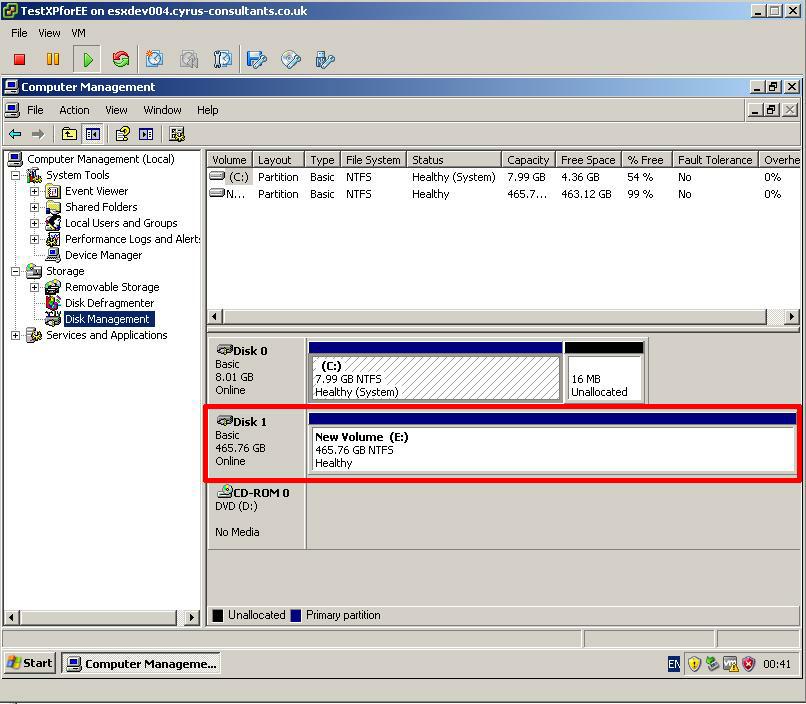
Vmkfstools Windows Live
By Jeremy Wheeler Recently while working onsite with a client I discovered they needed to have local Windows accounts created upon AppStack attachment as required by their application. The customer didn’t want to go through the process of recreating the AppStack to achieve this. I was able to solve this problem by injecting scripts into the VMDK of the AppStack. These scripts are called at the time a volume is dynamically attached, or at various points during system startup and logon. They are used in order only if present in the AppStack or Writable volume. If not present in the volume the batch file will be skipped.
Run vmkfstools --help for a list of common options including connection options. The examples use single quotes around some names; use double quotes on Windows. Create the specified file system: For ESX/ESXi version earlier than 4.0, specify the VMHBA name: vmkfstools -C vmfs3 -b 1m -S Test vmhba0:0:0:3.
All batch files are in the root of the AppStack or Writable Volume. They are only accessible on a system without an agent. For example, if you assign a volume to a Windows system and there is a user logged in, you would see the following steps—taken automatically—in chronological order: • prestartup.bat runs under Windows SYSTEM. If the volume is attached from boot, this will run when SVSERVICE starts. • startup.bat runs under Windows SYSTEM. If the volume is attached from boot, this will run when SVSERVICE starts. • shellstart.bat runs under Windows USER.
If the volume is attached before the user logs in, this is called just before the Windows shell launches. • startup_postsvc.bat runs under Windows SYSTEM. This will only occur if there are services or drivers on the AppStack or Writable Volume. • logon_postsvc.bat runs under Windows USER. This will only occur if there are services or drivers on the AppStack or Writable Volume. • allvolsattached.bat runs under Windows USER.
If multiple volumes are attached at the same time (i.e., during user logon), then this is called only once. These scripts may contain any scriptable actions and are used to customize Windows desktop and application actions at various points in time during the system startup and user login processes. This is to ensure AppStack and Writable Volume data will function appropriately and provide the user with the best possible experience. These scripts are case sensitive and should be utilized and/or modified with caution. Batch File Details: Optional wait times for each batch file may be configured.
These are just part of the agent machine. Wait times are defined in seconds and all settings are stored as REG_DWORD registry entries in the following Windows registry path. HKLM SYSTEM CurrentControlSet services svservice Parameters Registry keys may also be created on the agent machine using the command line interface. Example: reg.exe add HKLM SYSTEM CurrentControlSet services svservice Parameters /v KeyValue /t REG_DWORD /d 60 End User System Batch Files The following is a list of each batch file used on the end-user system. • prestartup.bat – Launched under Windows SYSTEM when a volume is dynamically attached or during system startup prior to virtualization being activated. Optional wait time key: WaitPrestartup (default do not wait).
• startup.bat – Launched under the Windows SYSTEM when a volume is dynamically attached or during system startup. (Right after the volume is virtualized) Optional wait time key: WaitStartup (default do not wait). • startup_postsvc.bat – Launched under the Windows SYSTEM after services have been started on the volume. This is only called when there are services on the volume, which are needed to be started (not called unless there are services on volume). Optional wait time key: WaitStartupPostSvc (default do not wait). • logon.bat – Launched under the Windows USER at logon and before Windows Explorer starts.
Optional wait time key: WaitLogon (default wait until it finishes). • logon_postsvc.bat – Launched under the Windows USER after services have been started. This is only called when there are services on the volume, which are needed to be started (not called unless there are services on volume). Optional wait time key: WaitLogonPostsvc (default do not wait).
• shellstart.bat – Launched under the Windows USER when a volume is dynamically attached or when Windows Explorer starts. Optional wait time key: WaitShellstart (default do not wait). • allvolattached.bat – Launched after all volumes have been processed (so if user has 3 AppStacks, this will be called after all 3 have loaded). Optional wait time key: WaitAllvolattached (default do not wait). • shellstop.bat – Launched under the Windows USER when Windows session logoff is initiated, but before Windows Explorer is terminated.
This Should Cut Down On Clipping Errors And Create More Realistic Reactions To Tackles. The Impact Engine Reads Player Collisions And Will Change Animations In Real-time. Inspire In Part By The Work Of The Fight Night Team. The New Addition To FIFA 12 Is A Brand-new Physics Engine. Fifa 12 download free.